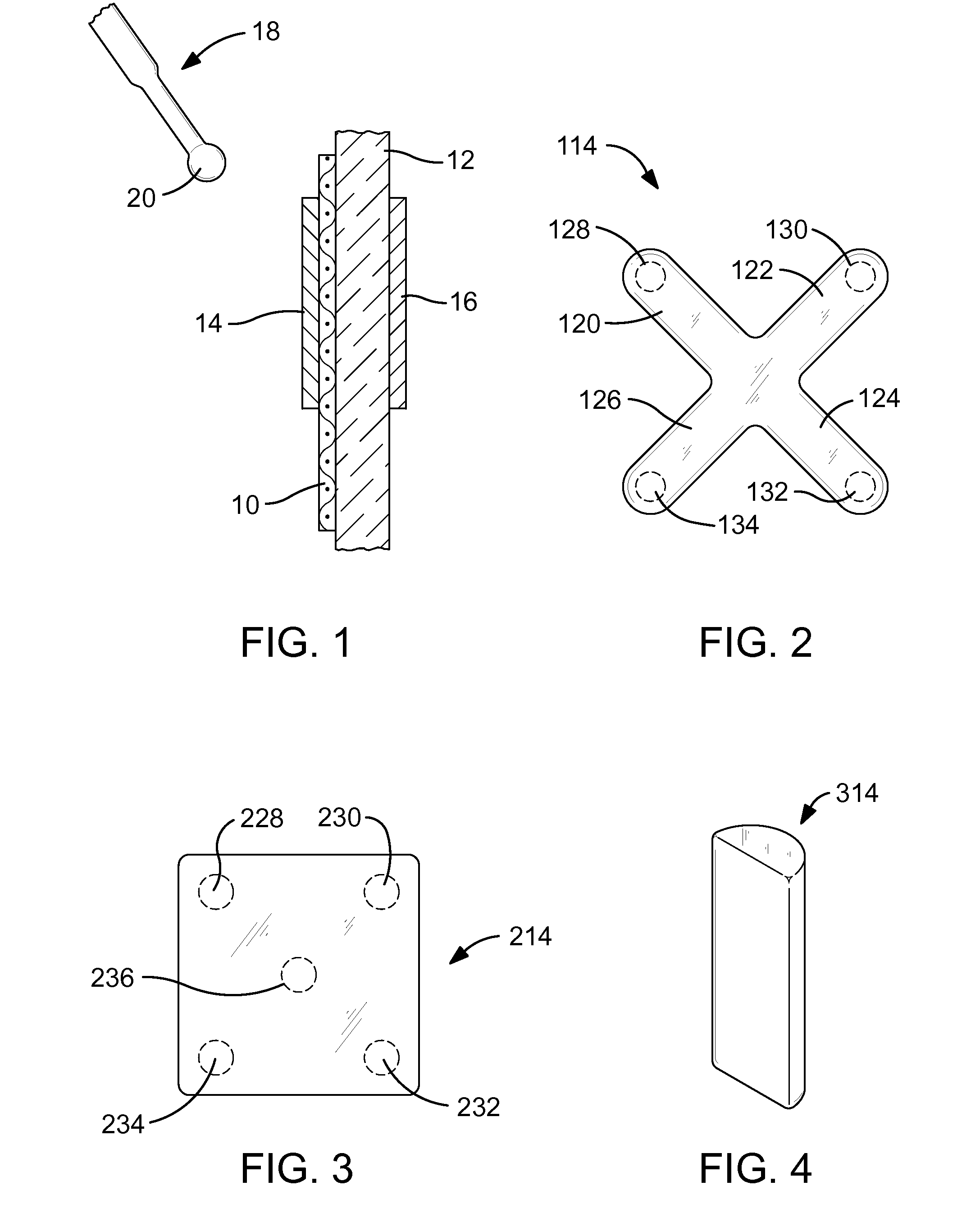Magnetic positioning of surgical mesh
a surgical mesh and magnetic positioning technology, applied in the field of magnetic positioning of surgical meshes, can solve the problems of mesh being relatively large, difficult to maneuver into a suitable position, and difficult to manipulate surgical mesh materials, etc., to achieve the effect of reducing the effort and difficulty of placing surgical meshes, facilitating maneuvering into a suitable position, and facilitating withdrawal
- Summary
- Abstract
- Description
- Claims
- Application Information
AI Technical Summary
Benefits of technology
Problems solved by technology
Method used
Image
Examples
Embodiment Construction
[0015]FIG. 1 of the drawings shows a surgical mesh 10 pinned against a body tissue 12, such as an abdominal wall, by a first magnetic material 14 and a second magnetic material 16. The first magnetic material 14 and the second magnetic material 16, one of which must be a magnet and the other of which may be either a magnet or merely magnetically responsive, have been inserted into place using conventional surgical tools such as a laparoscope (not shown). The surgical mesh 10 may be maneuvered into a final position relative to the body tissue 12 by other conventional surgical tools (not shown).
[0016]The advantage of using magnetic materials such as the first magnetic material 14 and the second magnetic material 16 is that repositioning of the surgical mesh is relatively easily accomplished. The first magnetic material 14 and the second magnetic material 16 are small enough to be readily delivered to the surgical site and removed therefrom by for example by a laparoscopic tool.
[0017]F...
PUM
 Login to View More
Login to View More Abstract
Description
Claims
Application Information
 Login to View More
Login to View More - R&D
- Intellectual Property
- Life Sciences
- Materials
- Tech Scout
- Unparalleled Data Quality
- Higher Quality Content
- 60% Fewer Hallucinations
Browse by: Latest US Patents, China's latest patents, Technical Efficacy Thesaurus, Application Domain, Technology Topic, Popular Technical Reports.
© 2025 PatSnap. All rights reserved.Legal|Privacy policy|Modern Slavery Act Transparency Statement|Sitemap|About US| Contact US: help@patsnap.com



